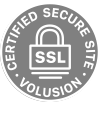 |
 |
 |
 |
DNG7500
Specifications Summary
RF Output:
Frequency Range: 500 kHz to 70 MHz
Frequency Resolution:
Noise: 1 Hz
CW: 1 KHz
Output Bandwidth: 70 MHz
Output Power: 0 dBm
Output Attenuator: 63.9 dB in 0.1 dB steps
Impedance: 50 Ohms
VSWR: 1.5:1
Output Connector: Type N
Harmonically Related Spurs: -60 dBc typical
Non-harmonic Spurs: -60 dBc typical <50MHz
-55 dBc typical <60MHz
-50 dBc typical >60MHz
Generator AWG:
Memory: 32 MB standard,
optionally up to 64 MB
DAC Resolution: 14 bits
DAC Output Rate: 150 MSPS
General:
Controller/Processor: Pentium Class 500 MHz
Memory: 256 MB
Hard Drive: 20.5 GB
Display: 8.4” TFT-LCD
640x480 resolution
Operating System: Windows 98 SE
Interfaces: Ethernet 10/100baseT,
Video, Keyboard, mouse,
GPIB.
Remote: Ethernet or GPIB
|
|
 |
 |
 |
 |
 |
Descripcion
The Noisecom programmable DNG7500, generates pseudo-random noise and CW signals for RF, Microwave, and digital applications. It can provide up to a 70 MHz wide RF output to emulate real-world noise and interference conditions. The user can create many complex waveforms, including digital notches, and burst pattern waveforms The Large 8.4 " color display contains unit block diagrams and tabular signal parameter values making the creation and storage of waveforms intuitive and efficient. The signals can be up-converted to your band of interest with an optional LO and mixer. User created MatLAB data files can be imported for digital conversion and subsequent analog signal output. An optional dual channel output allows for cost effective ATE test systems.
- Digitally simulated AWGN with user settable parameters
- Program noise band frequency, power level, and notch depth.
- Import user created MatLAB data files for digital conversion
- Optional Dual channels for independent signal output
- Standard GPIB, IEEE-488, remote interface
- Optional Ethernet remote control interface
|
|
 |
 |
 |
 |
|
 |

|



